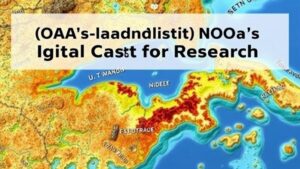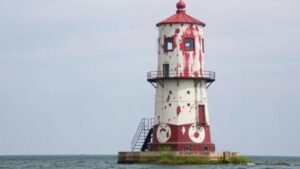Exploring Shipwreck Routes with NOAA’s Marine Archaeology Tools
Exploring Shipwreck Routes with NOAA’s Marine Archaeology Tools
The exploration of shipwreck routes has become increasingly significant in the field of marine archaeology, especially through the utilization of advanced tools developed by the National Oceanic and Atmospheric Administration (NOAA). As a pivotal agency in ocean exploration and research, NOAA provides a diverse range of resources aimed at enhancing our understanding of maritime heritage. This article discusses various methodologies employed by NOAA, the tools available for marine archaeology, significant shipwreck sites, and the broader implications for historical research and preservation.
The Importance of Marine Archaeology
Marine archaeology is essential for the preservation of underwater cultural heritage. Shipwrecks serve as time capsules that provide insights into historical trade routes, naval warfare, and societal changes. According to the UNESCO Convention on the Protection of the Underwater Cultural Heritage, approximately three million shipwrecks are estimated to lie submerged in the world’s oceans. Each of these wrecks presents an opportunity to unravel maritime history, revealing stories lost to time.
NOAA’s Role in Marine Archaeology
NOAA plays a crucial role in marine archaeology through its dedicated Office of National Marine Sanctuaries and the National Marine Fisheries Service. e divisions work collaboratively to promote research, preservation, and public education concerning underwater cultural resources.
- In 2001, NOAA established the Maritime Heritage Program to facilitate research and promote awareness of marine artifacts.
- NOAA’s Underwater Archaeology Branch focuses specifically on the examination and preservation of shipwrecks.
Marine Archaeology Tools and Technologies
NOAA employs several advanced tools and technologies for marine exploration, which significantly enhance the ability to identify and analyze shipwreck sites. Key tools include:
- Remote Sensing Technology: This includes sonar systems, such as side-scan sonar and multibeam sonar, which create detailed maps of the seafloor.
- GIS (Geographic Information Systems): GIS technology helps archaeologists to visualize spatial relationships and analyze data related to shipwreck sites.
- ROVs (Remotely Operated Vehicles): ROVs are equipped with cameras and various sensors, providing direct observation and data collection from underwater sites.
- 3D Modeling Software: This software allows researchers to create lifelike representations of wreck sites, aiding in the study and presentation of findings.
Case Studies in Shipwreck Exploration
Several notable case studies illustrate the effectiveness of NOAA’s marine archaeology tools in exploring shipwreck routes.
- The USS Monitor: The first ironclad warship commissioned by the U.S. Navy during the Civil War sank off the coast of North Carolina in 1862. NOAA used ROVs and sonar mapping to examine and document the wreck, leading to significant discoveries about its construction and historical context.
- The Florida Keys Shipwreck Trail: This trail includes various shipwrecks that can be explored through NOAA’s GIS technology. The research conducted has helped to preserve these sites while promoting eco-tourism.
Implications for Historical Research
The findings from NOAA’s explorations contribute significantly to historical research. The use of technological advancements helps to reconstruct maritime activity, trade routes, and naval conflicts. For example, the examination of shipwrecks from the Spanish colonial period in Florida has unveiled critical information regarding colonial maritime practices and regional dynamics.
Challenges and Future Directions
Despite the advancements in marine archaeology, challenges remain. Issues such as environmental degradation, looting, and the impact of climate change threaten shipwreck sites. NOAA is actively working to address these concerns through partnerships with other agencies, educational programs, and local communities.
Future directions for NOAA’s marine archaeology efforts include:
- Strengthening international collaborations to share knowledge and resources.
- Expanding the use of artificial intelligence and machine learning in data analysis for greater insights into shipwreck routes.
- Enhancing public engagement through technology-driven interactive platforms to promote awareness of underwater cultural heritage.
Conclusion
The exploration of shipwreck routes using NOAAs marine archaeology tools not only preserves our rich maritime heritage but also facilitates new discoveries that deepen our understanding of historical narratives. By leveraging advanced technologies and fostering collaborative efforts, NOAA continues to pave the way for innovative research and advocacy in the realm of marine archaeology. As our exploration techniques evolve, so too does our ability to connect the past with the present, ensuring that the stories held within these sunken vessels are honored and remembered for generations to come.



